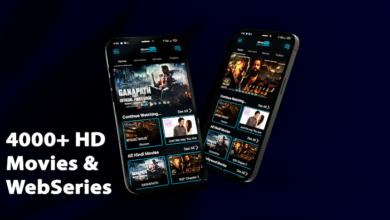Mastering Lead Prioritization: Combining Lists for Efficiency

Good lists together teach lead priorities.
Sales teams find fair lead generation to be not awful. Some might be ready to buy, while others would be miles distant or unsuitable. Particularly important in constantly shifting markets is sales efficiency. Establishing priorities can help your personnel either waste time on dead ends or achieve their objectives. Combine lists and give smart leads first priority.
This article will examine lead ranking by businesses using list stacking and other data sources. We will also discuss how to connect your assets to pretty lucrative opportunities to boost sales and return on investment.
The Most Valuable Concern
Lead lists might expose an explosion of CRM system data, web activity, email marketing, social media, events. Every list offers important information even in times of information overload. Sales teams suffer in the same way as well.
Empty outreach costs time and produces little.
Missing qualifying information from messy records results in missed opportunity.
Many lists provide a difficult leading tracking for a funnel.
Lead priorities accentuate the relevant opportunities at the right time, thereby helping your team to conquer challenges. Good prioritizing includes accumulating data from many sources and carefully examining every lead based on significant criteria.
disagreements over List Authority
Lead lists help companies organize disparate data. Stacked together, data from purchase history, event attendance, email communication, and social media engagement can let you more properly evaluate the goal and conversion potential of every lead.
This method assures performance of sales forces. Show every prospect great current information. Point up patterns and overlaps indicating more strong purchasing intent.
Eliminating low-priority or duplicate leads helps to process them.
List stacking is one creative way to provide top attention as it guides prioritizing. This method ranks lead lists based on most intriguing possibilities derived from several data sources. Logically, your business would find greater interest and benefit from a lead showing up on many lists.
Consider yourself to have:
People registered for a product spotlight event.
a fresh roster for trade events.
List of people opening your most current email.
Stack these lists to search for leads—like those of attendees of events registering for demos—that display two or more criteria. Given the curiosity this overlap generates, outreach gives these leads great weight. List stacking reduces noise and generates highly convergent opportunities.
Techniques for Optimally Combining Lists
Keeping your records in line helps.
Sort first your MQLs, contacts in CRM, social media activity, event attendance. Sort your pieces first; then cluster them.
Give up running back over yourself.
Create matching forms and basic email templates for names.
Minine pointless interactions.
Correct priorities and prevention of process misunderstanding. Sort first with data cleansing.
2. Plan Basic Needs
Many lists rank many different things. Choose which of the aspects relate to your business. Typical first concerns are:
Degree of involvement depends on emails, presentations, etc., contact point frequently.
Purchase intent: download of a trial or case study.
Industry; corporate size; authority to decide;
Recency connects to More lately, conversion rates in brand encounters have been more high.
These components help to support weight scales and leading grade systems.
3. Combining and counting anchored on technical basis using scoring systems.
Made by hand, time-consuming and error-prone are lists. Together, spreadsheets, marketing automation, and CRMs build beautiful lists. Many systems rely on lead scoring as their candidate ranking method grounded on signals. Lead overlapping detection methods or filters could stack automatically lists.
4. Lead derived from a section with high priority
Sort your lists following merging and stacking based on priority:
Tier 1: High-priority leads on many lists, particularly lately active ones.
Tier 2: Not found on many lists but yet meet fundamental needs. In tier three low priority rare leads demand more research.
Giving your sales staff grades will enable them to be more targeted.
5. First then increase marketing and sales.
In leadership, priorities defining goes beyond simple lists. Your sales and marketing programs have to coincide for a quick follow-up. While marketing could provide fewer worthy leads, sales teams focus on high-value prospects. Constant team meetings ensure that none of the leaders vanishes.
Advantages of lead prioritization and list stacking
Only one of the many ways smart data integration and list stacking help businesses is lead prioritization.
Sales teams focus on highly converting opportunities to increase win rates.
Resource economics enables low-value leads to reduce dead end duration.
Early engagement is very useful enhances pipeline processing.
Giving initial attention produces more relevant and tailored interactions, therefore improving customer experiences.
Combining lists simplifies the flow of leads fit for marketing and sales and fosters departmental collaboration.
Last perspective
Lead priority is really important in the somewhat competitive market of today. Using many lead lists and list stacking helps companies to organize their data and find the most interesting prospects. Prospect-oriented high-value sales teams may maximize return on investment, boost production, and accelerate closing of agreements.
Mastery of lead priority calls for data strategy, technology, and teamwork. As you better organize your data and give your opinions great weight, the prospects of success for your team grow. Combine your lists immediately and instead of leaving your lead shooting at chance every outreach project counts.





